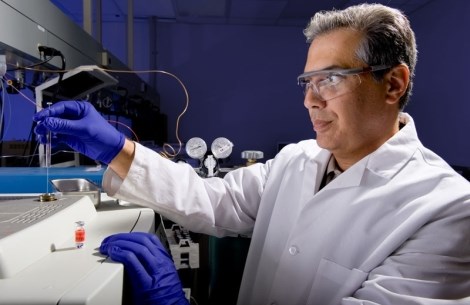EPA Targeting Metal Finishing Wastewater
Agency releases its preliminary 2014 effluent guidelines program; wastewater from the metal finishing industry is just one of the areas that will be subject to more regulation in the upcoming year.

The U.S. Environmental Protection Agency has released its preliminary 2014 effluent guidelines program, and wastewater from the metal finishing industry is just one of the areas that will be subject to more regulation in the upcoming year.
Wastewater runoff from the oil and gas production, petroleum refining and nanomaterial industries are also on the 2014 EPA agenda. The EPA will seek information from industries that may need either revised existing regulations or new regulations.
The EPA does not currently regulate wastewater discharges from nanomaterial manufacturing facilities. The agency also wants to find out more about discharges from centralized treatment facilities that accepts wastewater from hydraulic fracturing and other oil and gas extraction activities.
With a new look at the metal finishing industry, the EPA says it wants to gather more data about metal discharges, and in particular those performing zinc and cadmium plating.
The Clean Water Act requires EPA to publish every two years a schedule for reviewing and possibly revising effluent guidelines that have been promulgated as required by Section 304(b).
Under Section 304(b) of the Clean Water Act, the EPA regulates the discharge of pollutants from industries directly to surface waters through effluent limitation guidelines, and indirect discharges via wastewater treatments plants through pretreatment standards. Both regulatory limits are based on available technology.
The EPA published its notice announcing the preliminary FY 2014 plan on Sept. 16. The agency will accept comments, identified by Docket No. EPA-HQ-OW-2014-0170, at http://regulations.gov/ until Nov. 17.
Related Content
-
NASF/AESF Foundation Research Project #122: Electrochemical Approaches to Treatment of PFAS in Plating Wastewater - 10th Quarterly Report
The NASF-AESF Foundation Research Board selected a project addressing the problem of PFAS and related chemicals in plating wastewater streams. This report covers the 10th quarter of work (April-June 2023). Here, we examine the effect of surface fluorination of Ti4O7 anodes on PFAS degradation performance in terms of energy performance as well as formation of chlorate and perchlorate when chloride is present in the solution. The full paper on this work can be accessed and printed at short.pfonline.com/NASF24Feb2.
-
Ultrafiltration Membranes, Filter Elements for Improved Industrial Water Reuse
Ultrafiltration membranes help with water reuse in a variety of applications.
-
NASF/AESF Foundation Research Project #122: Electrochemical Approaches to Treatment of PFAS in Plating Wastewater - 9th Quarterly Report
The NASF-AESF Foundation Research Board selected a project addressing the problem of PFAS and related chemicals in plating wastewater streams. This report covers the ninth quarter of work (January-March 2023). In this report, we describe our work on evaluating the performance of PFAS degradation by electrooxidation using surface fluorinated Ti4O7 anodes in batch mode.















